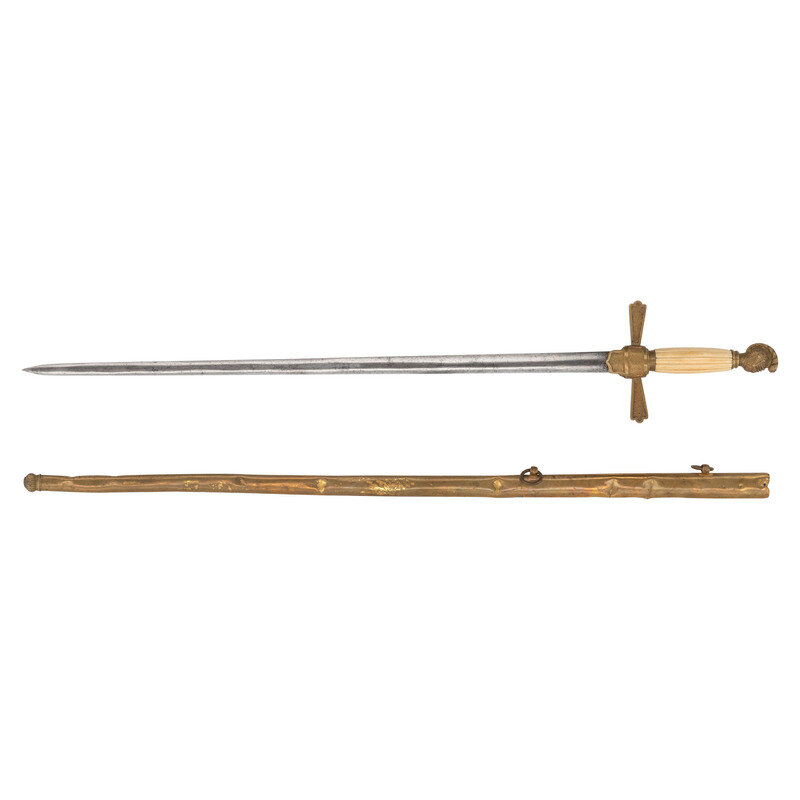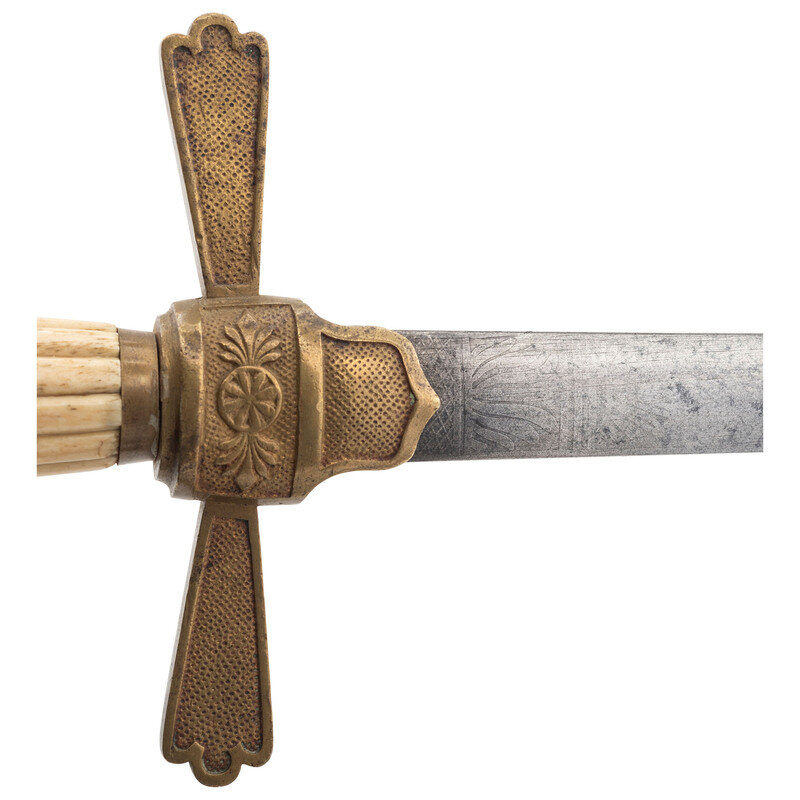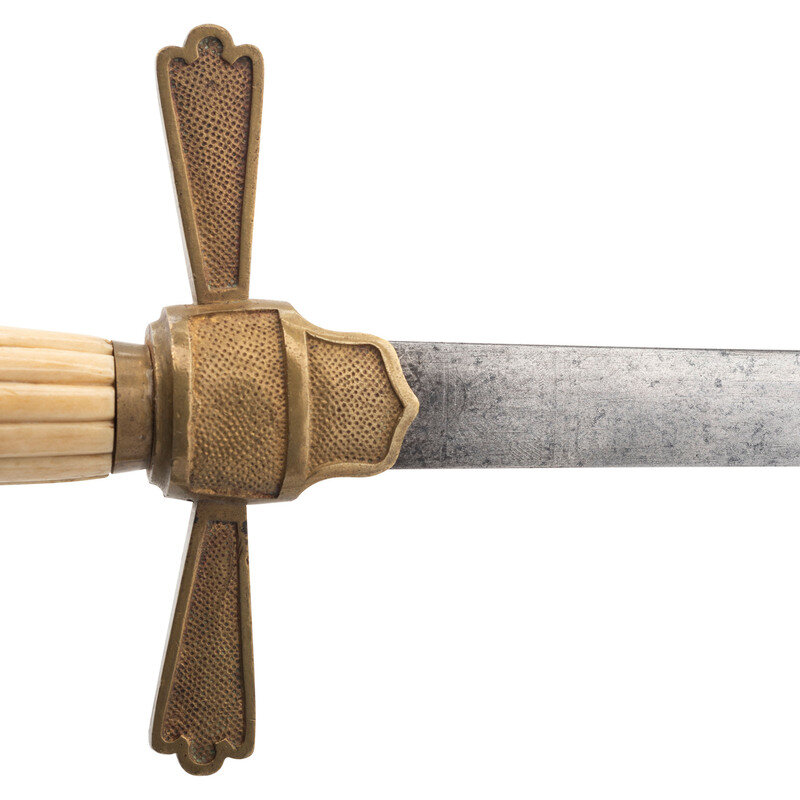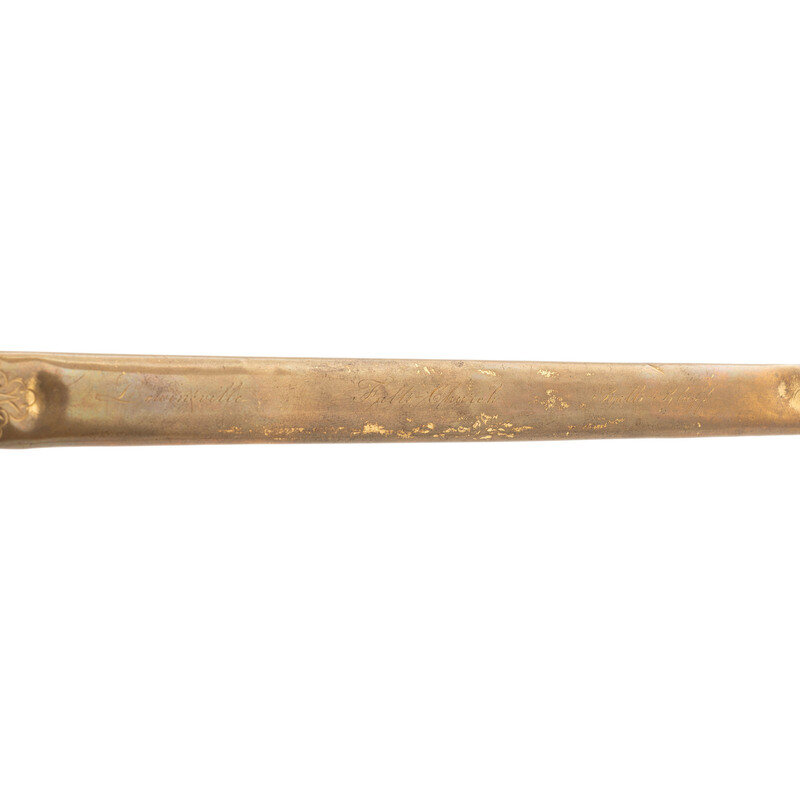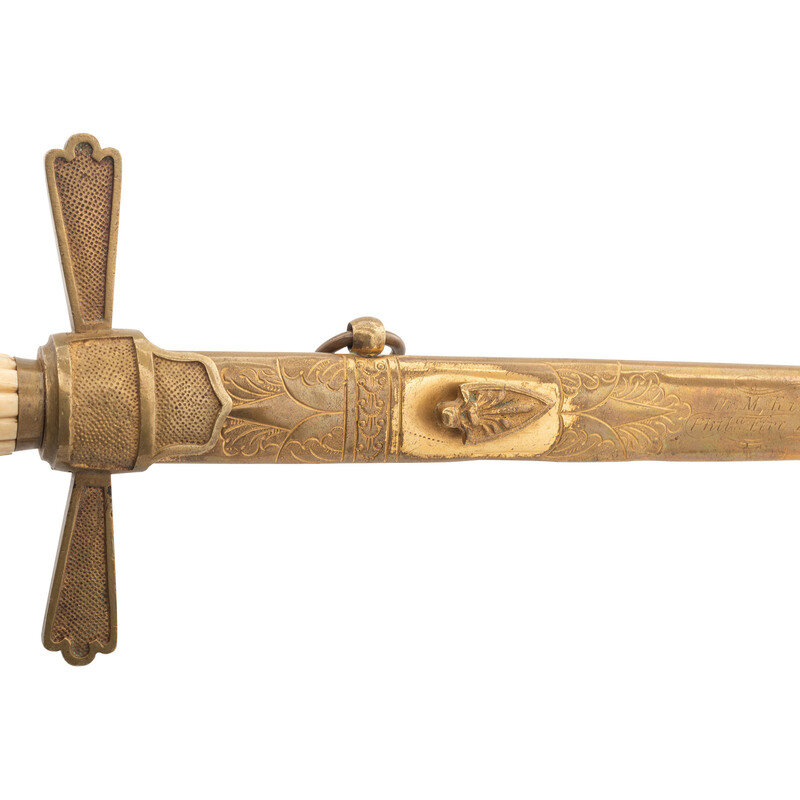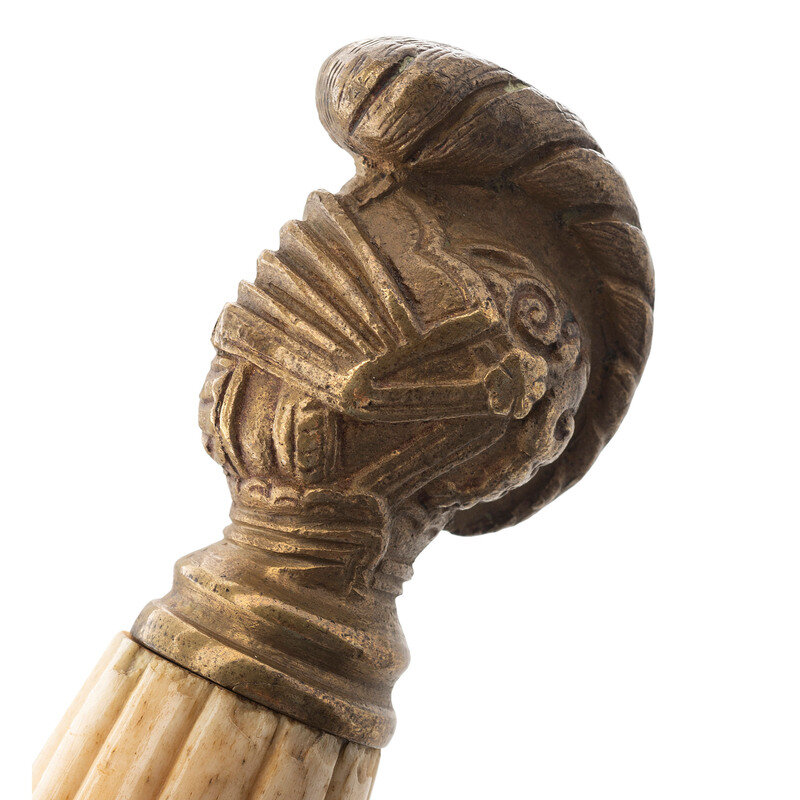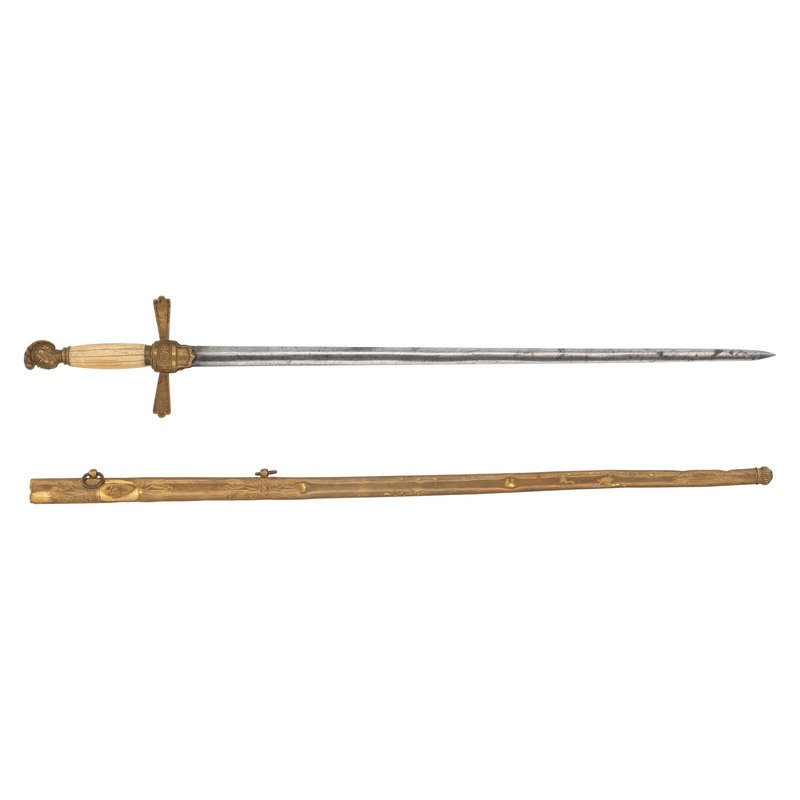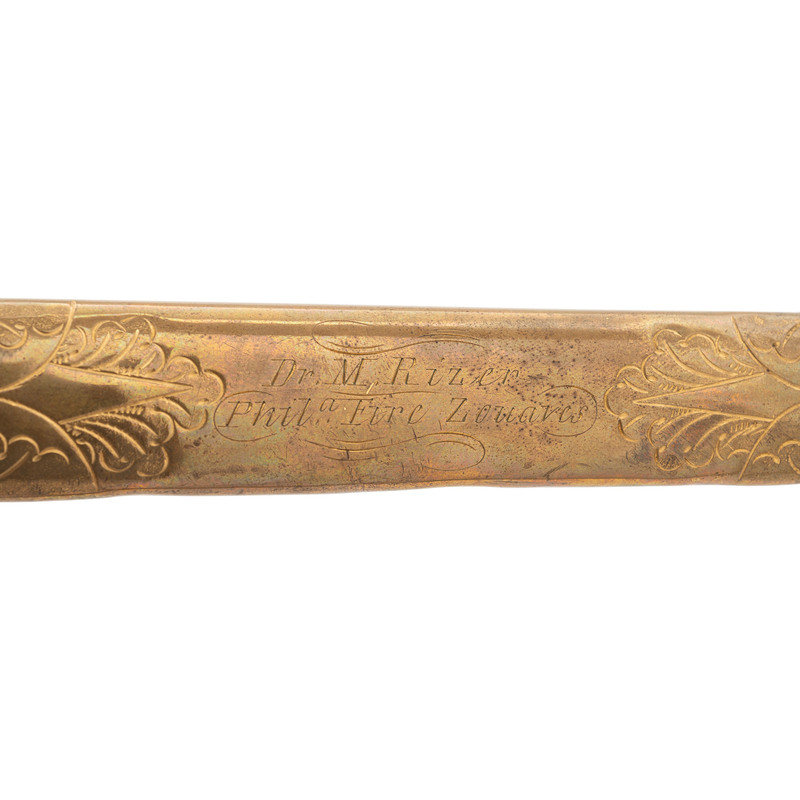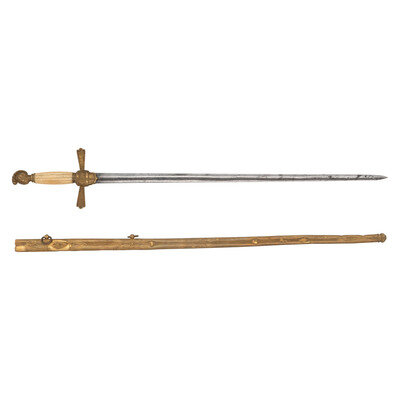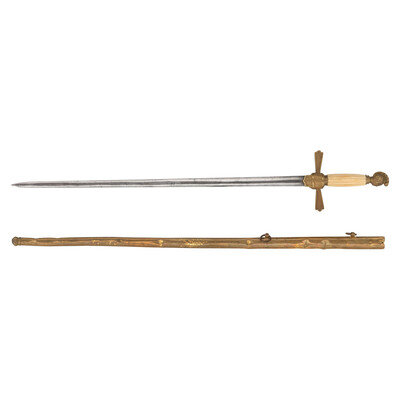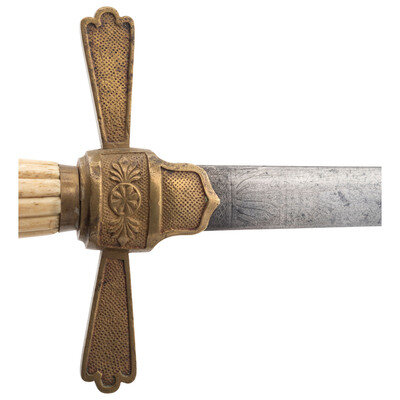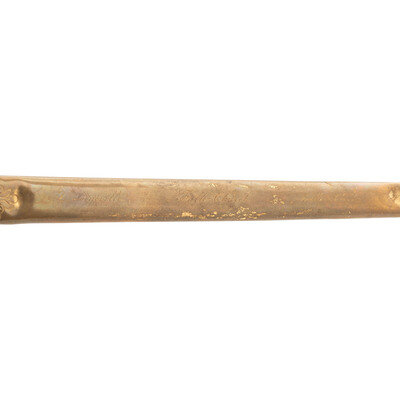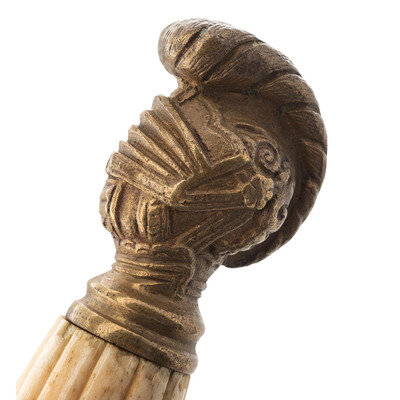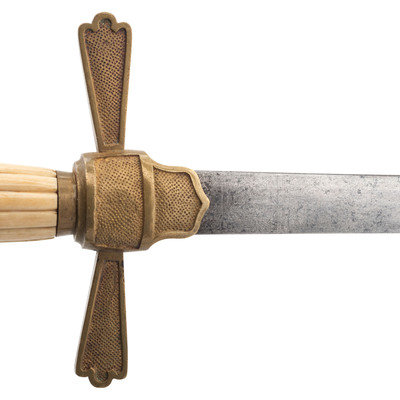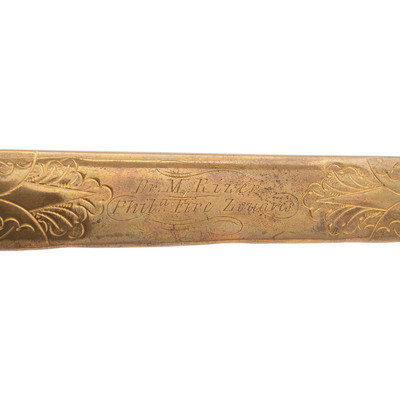Lot 57
24.75" straight double-edged spear point blade, .875" wide at ricasso. Overall length 31" with a brass Knight's Head pommel with reeded bone grip and 5" brass cross guard. Blade with barely legible etched panels that appear to include both foliate and marital themes. The accompanying gilt brass scabbard has a partially legible Horstmann mark on the reverse throat, two suspension rings, a frog hook and engraved decorations. The scabbard is several inches longer than the sword blade and the sword is almost certainly a replacement. The scabbard is inscribed between the suspension mounts Dr. M. Rizer/Phila Fire Zouave and further inscribed along the front body of the scabbard Lewisville, Falls-Church, Balls-Bluff and Harper's Ferry. The sword is accompanied by a large binder of research and information about Rizer and his regiment.
Dr. Martin Rizer (1829-1876) joined the Philadelphia Fire Zouaves (initially the 3rd California Volunteer Regiment, but soon re-designated as the 72nd Pennsylvania Infantry) on August 10, 1861 as the regiment's Assistant Surgeon. As early as the 1850 Census, Rizer was listed as a "physician" at the somewhat tender age of 20 years old. The regiment was one of four Pennsylvania regiments raised but credited to the state of California against their Federal levee for troops and initially served as the "California Brigade". An unusually large regiment as raised, it left Philadelphia with 15 companies and a strength of just under 1,500 men. The regiment moved to the defenses of Washington later in August of that year and in late September was attached to Baker's Brigade of Stone's (Sedgwick's) Division of the Army of the Potomac. In October of 1861, after the death of Colonel Edward Baker who was the force behind the formation of the California Brigade, Pennsylvania reclaimed the four regiments and renumbered them.
The regiment was stationed at Harpers Ferry in February of 1862 and attached to the 2nd Brigade, 2nd Division of the 2nd Army Corps in the Army of the Potomac in late March of that year. The regiment participated in the Peninsula Campaign, fighting during the Siege of Yorktown and at Seven Pines. They were then part of the Seven Days before Richmond campaign, and fought at Savage's Station and Malvern Hill. On August 4, 1862 Rizer was promoted to Regimental Surgeon. The regiment participated in the Maryland Campaign and suffered 237 casualties at Antietam, the third highest losses of any Union regiment in that battle. The regiment fought at Fredericksburg that December and started 1863 with the infamous Mud March. While a part of the Chancellorsville Campaign, the regiment was not engaged in that battle.
At Gettysburg the regiment arrived at their location at the angle of the stone wall near the Emmitsburg Pike at 1AM on July 2 and was in support of Cushing's Battery. This location would become the "High Water Mark" of the Confederacy on the afternoon of July 3, 1863 and of the 495 men of the 72nd PA engaged, 197 would be killed, wounded or missing. The 72nd PA Fire Zouave monument at the battlefield today is among the most striking of all Civil War monuments. That fall the regiment was part of the Bristoe Campaign and the Mine Run Campaign and spent the rest of 1863 on duty along the Rapidan. 1864 brought Grant's Overland Campaign and the regiment fought at the Wilderness, Spotsylvania and Cold Harbor. They were also part of the initial Siege of Petersburg but were mustered out having served their three years on August 24, 1864. Rizer returned to his life as a physician in Philadelphia after he left the army and died at the age of 47 on June 22, 1876.

